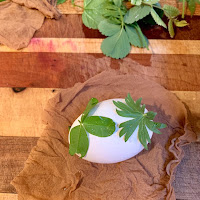September Art Blog 2024
Introduction to the Bacich Visual Arts Program: In Art For Bears TK-4th grade students are exposed to a highly engaging curriculum, which is aligned with the National Visual Art Standards. Ms. Libby’s expertise lies in building, refining, and implementing both discrete curricula in the visual arts and arts-integrated STEAM instruction across curricula. Mis. Libby cultivates student engagement and assessment strategies that make learning visible and lay the groundwork for future exercises in inquiry. Students are taught the language of the visual arts, connecting to history, science, math, social-justice, as well as personal views, and the world.
Thank you to KSPTA and KIK for funding the art supplies and tools for the Bacich art program!
Community Building and Mindfulness:
In the Bacich Art Room we started the school year with establishing art room routines and building an inclusive community classroom culture. We begin and end every class with a greeting, art classroom affirmation, and a thank you, signed in American Sign Language. Students love learning and practicing ASL to support inclusivity in our classroom. In each art class we spend 90 seconds mindfulness and sensory activity to calm our nervous system and get our bodies and minds ready to create.
2nd grade Arpilleras
Arpilleras or "cuadros" are exquisitely colorful, detailed, hand-sewn, three dimensional textile pictures. Arpilleras illustrate the stories of the lives of the women of the"pueblo jovenes" of Lima, Peru and provide essential income for their families. The arpilleras tell stories of planting and harvesting potatoes, tomatoes, cabbages, grapes, corn; stories of spinning and weaving wool; stories of country life, of tending llamas, alpacas, sheep and goats; stories of weddings and fiestas.
Students picked a primary or secondary color as the main color for their arpilleras. Using white in addition to the main color, students mixed tints, from dark to light to create a sense of space to depict the Andes Mountains. Students were introduced to the concept of complementary colors to achieve effective color contrast and vibrancy between the hills and the Peruvian houses and other details. Students folded the houses for their arpilleras in an origami style. Some students experimented folding smaller and smaller houses to convey perspective. Students created their own narratives adding llamas, alpacas, flowers, etc. to their arpilleras.
3rd Calaveras
A calavera, in the context of Day of the Dead, is a representation of a human skull or skeleton. The term is often applied to edible or decorative skulls made from either sugar or clay, used in the Mexican celebration of the Day of the Dead and the Roman Catholic holiday All Souls' Day. Students learned how to sketch a human skull and transfer their drawing onto a scratch board. After some practice of using scratchboard tools students refined their skills and scratched their skull images and designs on the scratchboard. Jewels and sequins were glued on to add a sparkling finish touch.
4th: Oaxac Alebrijes Animals
Traditionally, Alebrijes are carved and painted animal figurines that have become a form of symbolic art from Mexico. The word Alebrije means “imaginary” or “fantasy,” describing a style of animal carvings with exceptional paint schema.
Fourth grade students watched a video by Latin America Editor Lucia Newman as she reported from an artisan workshop in Oaxaca. Inspired by the skillful wood carvings students drew fantastical animal creatures. Students learned how to create a stencil out of their drawings to be used on a two color printmaking project using gelli plates. Students enjoyed decorating their finished prints with detailed patterns and designs.








Comments
Post a Comment